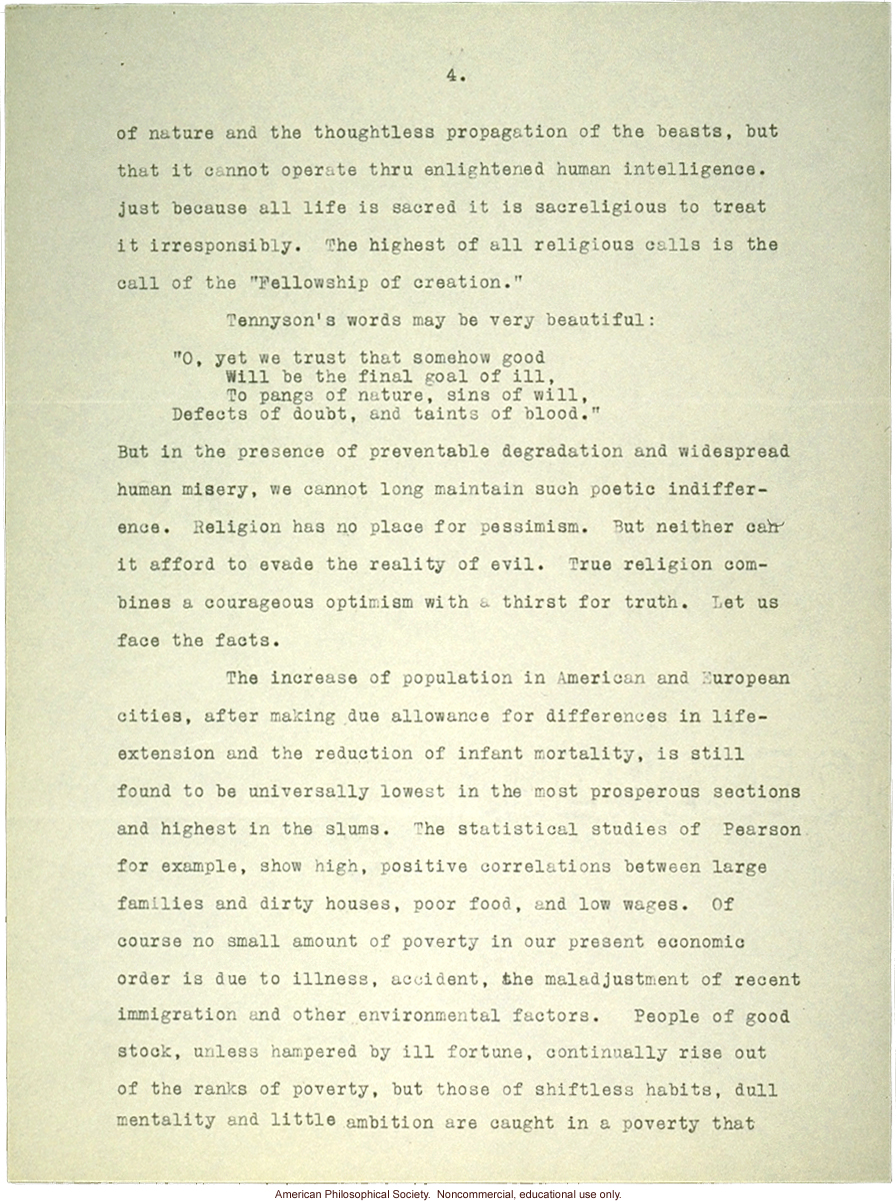[page number] 4. [end page number]
of nature and the thoughtless propagation of the beasts, but that it cannot operate thru enlightened human intelligence. just because all life is sacred it is sacreligious [sic] to treat it irresponsibly. The highest of all religious calls is the call of the "Fellowship of creation."
Tennyson's words may be very beautiful:
"O, yet we trust that somehow good
Will be the final goal of ill,
To pangs of nature, sins of will,
Defects of doubt, and taints of blood."
But in the presence of preventable degradation and widespread human misery, we cannot long maintain such poetic indifference. Religion has no place for pessimism. But neither can it afford to evade the reality of evil. True religion combines a courageous optimism with a thirst for truth. Let us face the facts.
The increase of population in American and European cities, after making due allowance for differences in life-extension and the reduction of infant mortality, is still found to be universally lowest in the most prosperous sections and highest in the slums. The statistical studies of Pearson for example, show high, positive correlations between large families and dirty houses, poor food, and low wages. Of course no small amount of poverty in our present economic order is due to illness, accident, the maladjustment of recent immigration and other environmental factors. People of good stock, unless hampered by ill fortune, continually rise out of the ranks of povery, but those of shiftless habits, dull mentality and little ambition are caught in a poverty that


